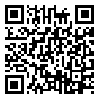Volume 69, Issue 2 (5 2011)
Tehran Univ Med J 2011, 69(2): 75-82 |
Back to browse issues page
Download citation:
BibTeX | RIS | EndNote | Medlars | ProCite | Reference Manager | RefWorks
Send citation to:



BibTeX | RIS | EndNote | Medlars | ProCite | Reference Manager | RefWorks
Send citation to:
M S, H K S, Z R T, S K, N S, M B. Designing and constructing an 100 bp DNA Ladder by combining PCR and enzyme digestion methods. Tehran Univ Med J 2011; 69 (2) :75-82
URL: http://tumj.tums.ac.ir/article-1-260-en.html
URL: http://tumj.tums.ac.ir/article-1-260-en.html
1- , hossein_khanahmad@yahoo.com
Abstract: (13629 Views)
Background: Molecular DNA markers are one of the most important tools in molecular biology labs. The size of DNA molecules is determined by comparing them with known bands of markers during gel electrophoresis. There are many different protocols to produce these kinds of molecular markers. In this study we have suggested an efficient strategy to produce molecular weight markers in industrial proportions.
Methods: To achieve the desired sizes of DNA fragments, a combination of two previously known methods, restriction enzyme digestion and polymerase chain reaction (PCR), were used. The enzymatic digestion process was based on designing and
constructing plasmids which equaled in size with the desired length of DNA fragments
and produced the desired DNA fragment upon linearization. In the PCR method, the desired length of DNA fragments were cloned in multiple cloning sites of pTZ57R plasmid and in a PCR reaction, the new constructed plasmid was used as a template to produce the final fragment.
Results: Upon application of this strategy, 2000 and 3000 bp DNA fragments were produced by enzymatic digestion of plasmids of the same size. Moreover, 100 to 1500 bp fragments were produced during PCR using only a set of forward and reverse
primers at the flanking region of pTZ57R multiple cloning site.
Conclusion: The highest advantage of this cost-benefit approach is to produce different types of molecular weight markers by using an effective and short protocol
Send email to the article author
| Rights and permissions | |
 |
This work is licensed under a Creative Commons Attribution-NonCommercial 4.0 International License. |





